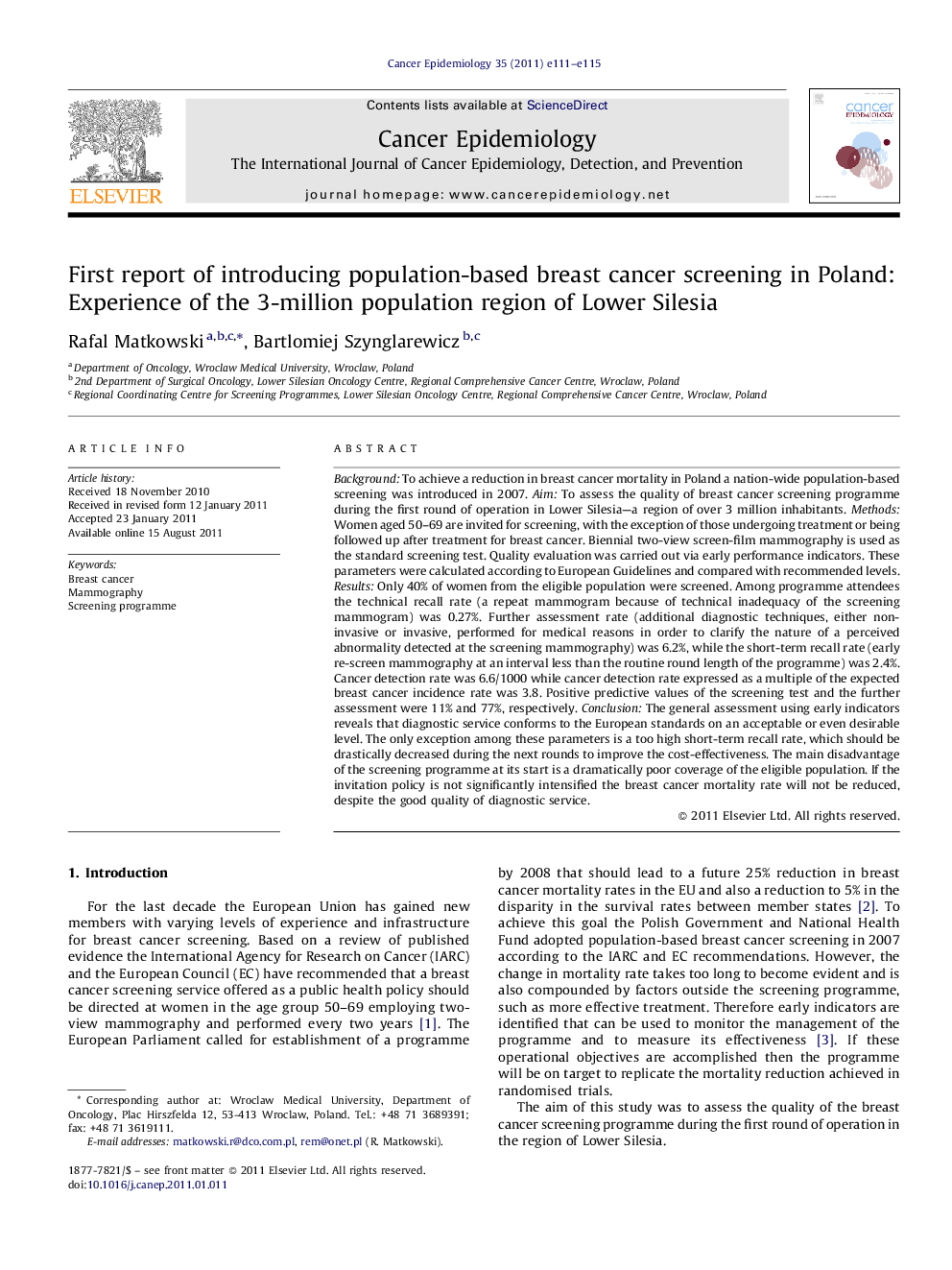| کد مقاله | کد نشریه | سال انتشار | مقاله انگلیسی | نسخه تمام متن |
|---|---|---|---|---|
| 10897597 | 1083880 | 2011 | 5 صفحه PDF | دانلود رایگان |
عنوان انگلیسی مقاله ISI
First report of introducing population-based breast cancer screening in Poland: Experience of the 3-million population region of Lower Silesia
دانلود مقاله + سفارش ترجمه
دانلود مقاله ISI انگلیسی
رایگان برای ایرانیان
موضوعات مرتبط
علوم زیستی و بیوفناوری
بیوشیمی، ژنتیک و زیست شناسی مولکولی
تحقیقات سرطان
پیش نمایش صفحه اول مقاله

چکیده انگلیسی
Background: To achieve a reduction in breast cancer mortality in Poland a nation-wide population-based screening was introduced in 2007. Aim: To assess the quality of breast cancer screening programme during the first round of operation in Lower Silesia-a region of over 3 million inhabitants. Methods: Women aged 50-69 are invited for screening, with the exception of those undergoing treatment or being followed up after treatment for breast cancer. Biennial two-view screen-film mammography is used as the standard screening test. Quality evaluation was carried out via early performance indicators. These parameters were calculated according to European Guidelines and compared with recommended levels. Results: Only 40% of women from the eligible population were screened. Among programme attendees the technical recall rate (a repeat mammogram because of technical inadequacy of the screening mammogram) was 0.27%. Further assessment rate (additional diagnostic techniques, either non-invasive or invasive, performed for medical reasons in order to clarify the nature of a perceived abnormality detected at the screening mammography) was 6.2%, while the short-term recall rate (early re-screen mammography at an interval less than the routine round length of the programme) was 2.4%. Cancer detection rate was 6.6/1000 while cancer detection rate expressed as a multiple of the expected breast cancer incidence rate was 3.8. Positive predictive values of the screening test and the further assessment were 11% and 77%, respectively. Conclusion: The general assessment using early indicators reveals that diagnostic service conforms to the European standards on an acceptable or even desirable level. The only exception among these parameters is a too high short-term recall rate, which should be drastically decreased during the next rounds to improve the cost-effectiveness. The main disadvantage of the screening programme at its start is a dramatically poor coverage of the eligible population. If the invitation policy is not significantly intensified the breast cancer mortality rate will not be reduced, despite the good quality of diagnostic service.
ناشر
Database: Elsevier - ScienceDirect (ساینس دایرکت)
Journal: Cancer Epidemiology - Volume 35, Issue 6, December 2011, Pages e111-e115
Journal: Cancer Epidemiology - Volume 35, Issue 6, December 2011, Pages e111-e115
نویسندگان
Rafal Matkowski, Bartlomiej Szynglarewicz,